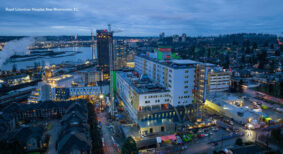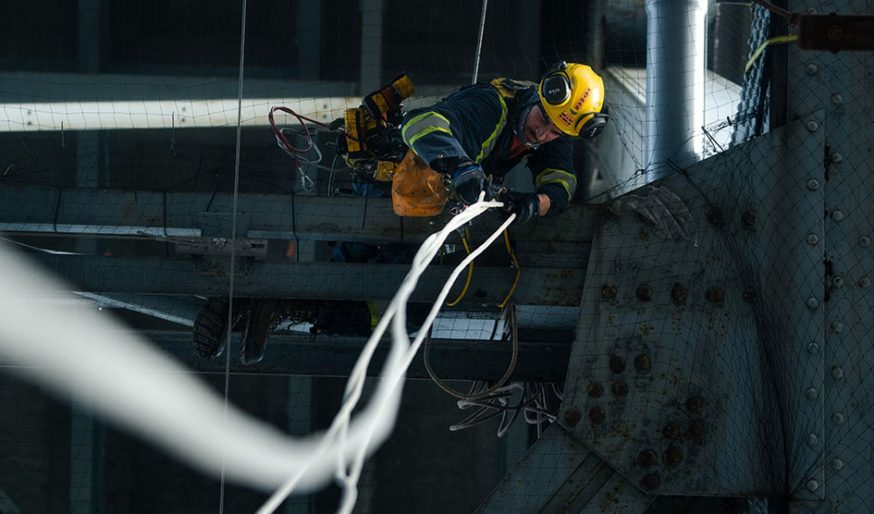The maintenance of old structures is becoming increasingly complicated by new regulations. Rehabilitation projects now face tighter governance from environmental and safety organizations, adding new layers to navigate for those tasked with asset management. Yet, these restrictions have driven innovation, pushing Tatras Group to develop cutting-edge solutions that allow work to move forward freely.
“We are taking over the environmental responsibility. We’re taking on that environmental problem from the shoulders of the general contractor,” said Michal Brondel, CEO, Tatras Group.
It is not uncommon for major projects to be brought to a halt by unexpected ecological factors. When the BC Ministry of Transportation and Infrastructure launched its plan to restore the Ironworkers Memorial Bridge in Vancouver, it was a bird that dictated the construction schedule. The Pelagic Cormorant is a sea bird protected under the provincial Wildlife Act, preventing work from being conducted within 50m of a bird or its nest. This posed a significant problem for the proposed bridge rehabilitation project. Tatras is no stranger to this environment. As a rope access company, they have worked on bridge restoration projects across B.C. They saw a clear solution and had the access methods to deliver it.
The Tatras team had just completed debris netting installation on the City of Vancouver’s Granville Bridge. Working with engineers and biologists, they designed a new netting system that prevents the birds from entering the structure when they migrate to BC. This avian exclusion netting allows construction to continue beyond the narrow window between nesting seasons. Made from a UV stabilized polyethylene, the net stands up to the marine environment and blends into the bridge.
But, it is their cutting-edge installation methods that have attracted attention. Across all their engineered netting services, they offer a non-damaging installation option. This system does not require alterations to the bridge. Rather than drilling into the structure, they design and manufacture custom clamps and magnets to support the net. Once removed, there is no trace of it being there. This system improves upon standard netting options, where every aspect is assessed for strength and wind loading capacity, and each section custom-made to ensure a tight and seamless fit. In many cases, both bird netting and debris netting are installed on the structure. All backed by a custom maintenance package and annual inspection plan.
“We’re the first ones on site, and our access solutions allow us to safely manage the space prior to the arrival of subcontractors,” said Oskar Michalak, COO, Tatras Group.
A structure like the Ironworkers Memorial Bridge presents its own challenges. Even with everything pre-planned, accessing work locations can be both hazardous and time-consuming. Tatras keeps everything in house by providing a crew of rope access professionals. This technical team is employed full-time to install netting systems on structures across the country. They are familiar with the unique environment, the installation process, and the complications of the work. This crew contributes high-angle access methods that allow work to be completed both safely and efficiently, all while ensuring low impact on traffic and pedestrians in the navigation channels below. This experience has contributed to Tatras’ excellent safety record, founded on safety procedures that have earned them the sought after B.C. Construction Safety Alliance COR certification.
“By combining engineering, manufacturing and installation, we can offer new solutions that allow major projects to be conducted along an efficient timeline,” said Brondel.
While they pilot new netting systems in Vancouver, Tatras sees huge potential for engineered netting systems to be deployed across Canada. Beyond bridge rehabilitation projects, they look to highways and canyons for new opportunities to innovate. Meanwhile, their building restoration division provides further remediation services for commercial buildings and structures. This presents a complete solution to a diverse range of rehabilitation projects. And it may be this comprehensive approach that is leading them to find new answers in hard to reach places.










